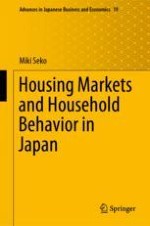2019 | OriginalPaper | Buchkapitel
12. Perceived Preparedness and Attitude of Japanese Households Toward Risk Mitigation Activities Following the Great East Japan Earthquake: Earthquake Insurance Purchase and Seismic Retrofitting
verfasst von : Miki Seko
Erschienen in: Housing Markets and Household Behavior in Japan
Verlag: Springer Singapore
Aktivieren Sie unsere intelligente Suche, um passende Fachinhalte oder Patente zu finden.
Wählen Sie Textabschnitte aus um mit Künstlicher Intelligenz passenden Patente zu finden. powered by
Markieren Sie Textabschnitte, um KI-gestützt weitere passende Inhalte zu finden. powered by
